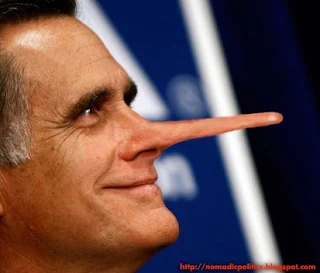Still don’t believe in climate change? Then you’re either deep in denial or delirious from the heat," wrote Pulitzer Prize columnist Eugene Robinson in the Washington Post on Tuesday. "As I write this, the nation’s capital and its suburbs are in post-apocalypse mode. About one-fourth of all households have no electricity, the legacy of an unprecedented assault by violent thunderstorms Friday night. Things are improving: At the height of the power outage, nearly half the region was dark. The line of storms, which killed at least 18 people as it raced from the Midwest to the sea, culminated a punishing day when the official temperature here reached 104 degrees, a record for June." And so on, adding stats from climatologists, and noting that if GOPers weren't such foes of solar power, they might well have had air conditioning today from rooftop solar collectors.
I happened to learn of this column from a flash through the new MSNBC show, "The Cycle," which features four cohosts, including a resident winger, a young woman in scholarly glasses, who said she was not terribly impressed with what a political columnist had to say about climate--she'd preferred a real climatologist.
Like nearly all of them haven't been heard on the subject. Well, okay--how about this, also from Tuesday?
"But since at least 1988, climate scientists have warned that climate change would bring, in general, increased heat waves, more droughts, more sudden downpours, more widespread wildfires and worsening storms. In the United States, those extremes are happening here and now.
So far this year, more than 2.1 million acres have burned in wildfires, more than 113 million people in the U.S. were in areas under extreme heat advisories last Friday, two-thirds of the country is experiencing drought, and earlier in June, deluges flooded Minnesota and Florida.
"This is what global warming looks like at the regional or personal level," said Jonathan Overpeck, professor of geosciences and atmospheric sciences at the University of Arizona. "The extra heat increases the odds of worse heat waves, droughts, storms and wildfire. This is certainly what I and many other climate scientists have been warning about."
Kevin Trenberth, head of climate analysis at the National Center for Atmospheric Research in fire-charred Colorado, said these are the very record-breaking conditions he has said would happen, but many people wouldn't listen. So it's I told-you-so time, he said.
As recently as March, a special report an extreme events and disasters by the Nobel Prize-winning Intergovernmental Panel on Climate Change warned of "unprecedented extreme weather and climate events." Its lead author, Chris Field of the Carnegie Institution and Stanford University, said Monday, "It's really dramatic how many of the patterns that we've talked about as the expression of the extremes are hitting the U.S. right now."
"What we're seeing really is a window into what global warming really looks like," said Princeton University geosciences and international affairs professor Michael Oppenheimer. "It looks like heat. It looks like fires. It looks like this kind of environmental disasters."
(Photo: one in a series of the Washington storms by Joel Holland.)
I learned from someone in the DC area a bit more about what "post-apocalyptic mode" looks like as well. It's children and old people trapped in houses with no air conditioning or even refrigeration, or by now, even much food, since the contents of refrigerators in areas still without power have long since spoiled. It's seniors and the disabled totally dependent on the Meals on Wheels deliverers huffing up 14 floors of stairs because of no power for the elevator.
All of this in triple digit heat that gets down to 90 at night. 23 known deaths so far are attributed to the heat and storms in the DC area. Thanks in part to denialists, preparation and response was in many cases valiant, but inadequate--and that's likely true across the country.
And this heat is widespread across the East Coast, Mid-Atlantic, South, Midwest and far West. And the patterns look like they will continue through the month and well into next.
I remember that summer of 1988 when I got an inkling of what global heating would feel like. But nearly a quarter century later we are still hearing well-paid, mediagenic and otherwise respectable deniers acting as if the scientific evidence isn't overwhelming, and the human costs of denial aren't obvious outside the studio door. We're firmly in the political clutches of the paid and paid-off deniers with political and economic power, who are trying to increase and solidify that power for the foreseeable future, which, if they continue in this and even increase their stranglehold, may not actually be very long.
In a recent interview Kim Stanley Robinson, author of the vivid Science in the Capital trilogy, allows that people are tired of reading about the Climate Crisis, including him. Because so far nothing changes. At best, it's the moment before smoking "suddenly" slipped into being really unacceptable, and one municipality after another banned it from public places, which was actually after decades of battle and well-paid denial.
What is supposed to overwhelm the denial and cauterize the denialists is feeling the reality of the Climate Crisis. In the U.S. this summer may well test that theory, but a lot of innocent people will pay the price for those well-paid and paid off in our political and media capitals.
Independence Day? Not yet. And make no mistake: the science news of the day has nothing to do with God particles. It's what the real world is doing to us thanks to what we have done, and it's about what we're not doing about it.















